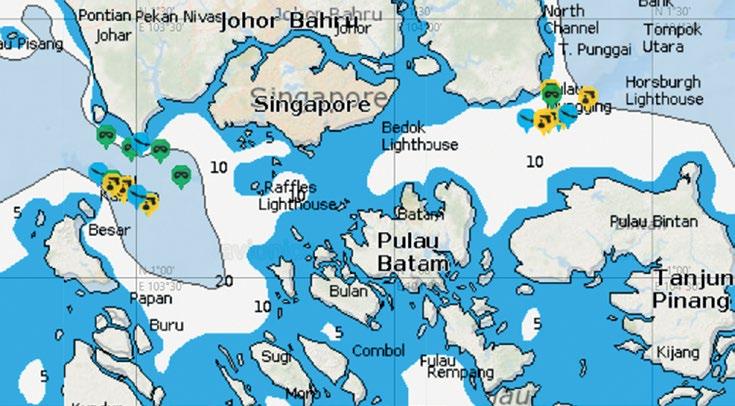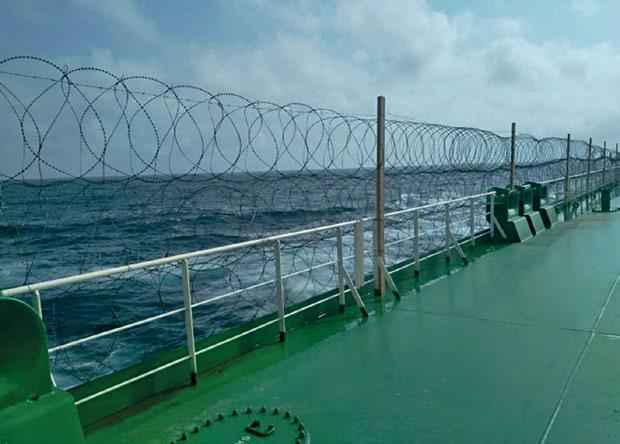
3 minute read
Maritime Security Developments
from Wavelenght #82
MARINE OPERATIONS Maritime Security Developments: New Threats and Best Practices
The International Ship and Port facility Security (ISPS) code entered into force under SOLAS chapter XI-2, on July 1st 2004 to safeguard and manage the maritime security of ships and port facilities. Notwithstanding the initial skepticism in the shipping industry, the ISPS code evolved into a fundamental element of a ship’s day to day operation. Piracy revival in the Gulf of Aden and the Indian Ocean in 2008 led to the development of the ISPS code mainly as “anti-terrorism” focused code. Piracy in the Indian Ocean has been heavily suppressed during the last 5 years after numerous tragic events (hijackings, crews held captive for several months, crew deaths, ransoms for freeing crew etc). Unfortunately, new areas of threats are emerging continuously across the globe and include among others: terrorism, acts of theft/robbery, drone attacks, unstable political regimes, massive migration attempts and stowaways on board. The Ship Security Plan (SSP) is the primary guide for security control on board. It is specifically formulated for each ship to ensure that security measures are applied onboard to protect the ship’s crew, equipment and cargo from any security-related risks. Additionally, plans and procedures have been implemented to deal with the evolving threats and high sea transit in Piracy infested areas. These are the Anti-Piracy Plan, theVessel Hardening Plan (VHP) and the Company Security Plan. The frequency and severity of attacks is diminishing in certain areas. The Indian Ocean and the Gulf of Aden’s characterization as areas of “additional war risk” has been significantly shrunk by Underwriters. However, new areas of security threats and new methods of security breaches are emerging continuously. So, it is of paramount importance to remain vigilant at all times and implement the security measures laid out in the SSP.
Advertisement
Screenshot from NAVTOR’s Navtracker, indicating numerous recent incidents in Singapore area The most effective piracy deterrent throughout this period of evolving threats has been the proper fortification and fencing of the vessel. Hardening the ship demonstrates the preparedness and vigilance of the ship’s crew from far away. The layers of razor wire at the ship’s side can deter the attackers, irrespective of the presence or not of armed guards and /or a security escort vessel. Fencing can be installed in various ways. BMP5 (Best Management Practices to Deter Piracy and Enhance Maritime Security in the Red Sea, Gulf of Aden, Indian Ocean and Arabian Sea) recommends a double row of high tensile concertina razor wire with coil diameters of 730mm or 980mm. An example of a razor wire installation can be seen in the attached photograph.
Three rows of razor wire properly strengthened using wooden poles and seizing wires is the primary layer of defense against any piracy boarding attempt. Razor wire must be handled with extreme caution and only after donning the appropriate personal protective equipment. Gloves and hooks are required to avoid hand injuries. Vessel has to be sufficiently equipped with antipiracy material (according to the Vessel Hardening Plan, section 5) and associated protective equipment at all times. In addition to the proper installation of physical barriers, crew vigilance is of paramount importance and may avert a security breach in piracy infested waters such as in the wider Singapore area. Complacency in maintaining the required security measures may lead to incidents even in the lowest risk profile ports: kidnappings, injuries to crew members by intruders, petty theft, stealing from a ship’s stores, stealing equipment, the boarding of stowaways, and using a vessel as a means of trafficking illegal substances, are among the many security threats that could occur anywhere in the world if relevant precautions are neglected. Such incidents may have severe repercussions not only on the Crew’s physical integrity, or the loss of stores and personal belongings but also on the tradability of the ship in many ways. Maintaining a secure vessel requires the whole-hearted participation of the ship’s crew and office personnel. Regular safety drills and safety meetings are essential, procedures are to be followed diligently and security plans improved through the continuous process of adjusting to new threats. Wishing you safe and secure voyages!
By George Koutroubousis, CSO








